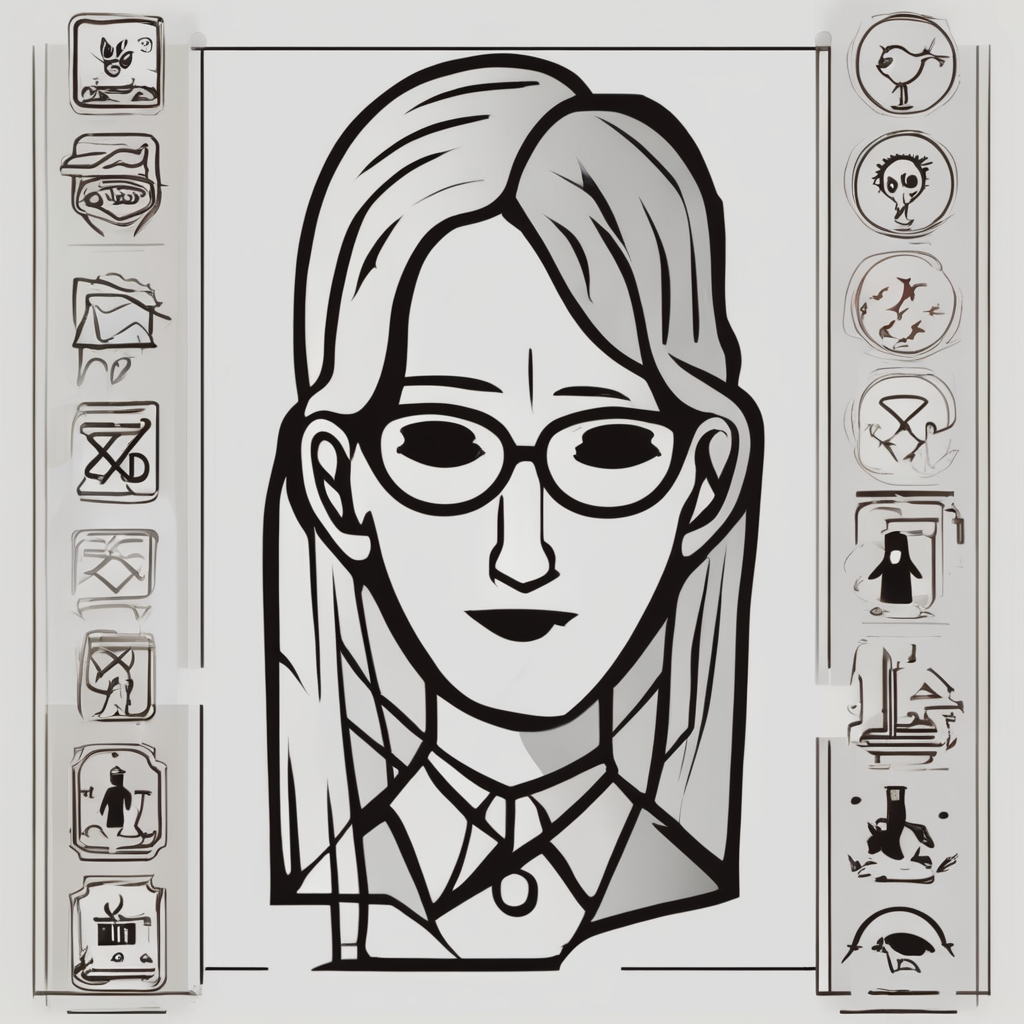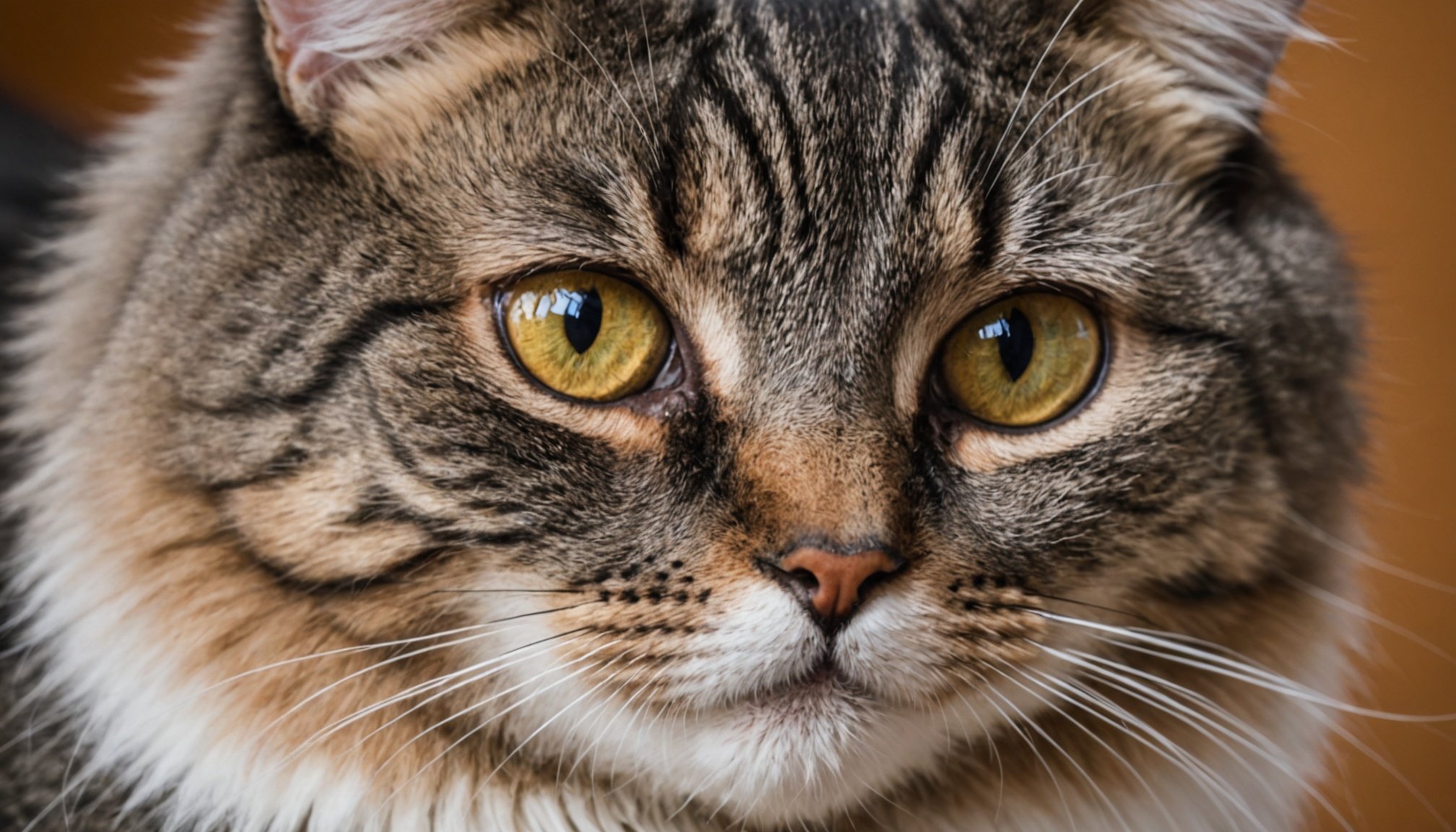Spotting and Managing Early Cataracts in Senior Cats: Preserve Your Feline’s Vision with Effective Care
As your cat ages, it’s essential to be vigilant about their health, particularly when it comes to their vision. Cataracts, a common eye problem in older cats, can significantly impact your feline’s quality of life. Here’s a comprehensive guide to help you identify and manage cataracts in your senior cat.
Understanding Cataracts in Cats
Cataracts are a clouding of the lens in the eye that can lead to vision loss and, if left untreated, blindness. Unlike dogs, where cataracts are more prevalent, feline cataracts are relatively rare but still a significant concern for older cats.
A découvrir également : Enhancing Environmental Enrichment for Cats with Limited Mobility: Effective Assessment and Improvement Strategies
Causes of Cataracts in Cats
Cataracts in cats can be caused by various factors, including:
- Age: As cats get older, the risk of developing cataracts increases.
- Genetics: Some breeds are more prone to cataracts due to genetic predisposition.
- Injury: Trauma to the eye can cause cataracts.
- Disease: Certain diseases, such as diabetes, can increase the risk of cataract development.
- Nutritional Deficiencies: Lack of essential nutrients can contribute to cataract formation.
Signs and Symptoms of Cataracts in Cats
Identifying cataracts early is crucial for effective management. Here are some signs and symptoms to look out for:
Avez-vous vu cela : Enhancing Environmental Enrichment for Cats with Limited Mobility: Effective Assessment and Improvement Strategies
Visible Signs
- Cloudy Lens: A visible clouding or opacity in the lens of the eye.
- Redness and Inflammation: The eye may appear red or inflamed.
- Discharge: There could be an unusual discharge from the eye.
Behavioral Changes
- Bumping into Objects: If your cat starts bumping into furniture or having difficulty navigating familiar spaces, it could be a sign of vision loss.
- Changes in Appetite or Activity Level: Vision loss can lead to changes in appetite or a decrease in activity level.
- Increased Vocalization: Your cat may become more vocal due to discomfort or confusion.
Diagnosing Cataracts in Cats
If you suspect that your cat has a cataract, it’s essential to consult with your veterinarian for a proper diagnosis.
Diagnostic Tests
- Ophthalmic Examination: Your vet will perform a thorough eye examination to check for any abnormalities.
- Ultrasound: In some cases, an ultrasound may be used to evaluate the eye’s internal structures.
- Blood Tests: To rule out underlying diseases that could be contributing to the cataract.
Treatment Options for Cataracts in Cats
The treatment of cataracts in cats depends on the severity and the overall health of your pet.
Medical Management
For early-stage cataracts or in cases where surgery is not feasible, medical management may be recommended. This can include:
- Anti-inflammatory Medications: To reduce inflammation and discomfort.
- Antibiotics: If there is an infection present.
- Pain Management: To ensure your cat remains comfortable.
Cataract Surgery
Surgery is often the most effective treatment for cataracts in cats. Here are some key points to consider:
- Procedure: The surgery involves removing the cloudy lens and, in some cases, implanting an artificial lens.
- Success Rate: The success rate for cataract surgery in cats is high, with many cats regaining significant vision.
- Post-Surgery Care: Proper post-surgery care is crucial to ensure a smooth recovery. This includes administering prescribed medications, protecting the eye from injury, and follow-up visits with your vet.
| **Treatment Option** | **Description** | **Success Rate** | **Cost** |
|
|-----------------|
|----------|
| Medical Management | Anti-inflammatory medications, antibiotics, pain management | Variable | $50-$200 per month |
| Cataract Surgery | Removal of the cloudy lens, possible implantation of an artificial lens | High (80-90%) | $1,500-$3,000 per eye |
Additional Eye Problems in Older Cats
Besides cataracts, older cats can be prone to other eye problems that need attention.
Glaucoma
Glaucoma is a condition where the pressure in the eye increases, leading to vision loss and potentially blindness. It is often associated with cataracts and can be managed with medications or surgery.
Retinal Detachment
Retinal detachment occurs when the retina separates from the back of the eye. This is an emergency situation that requires immediate veterinary attention.
Conjunctivitis
Conjunctivitis, or pink eye, is an inflammation of the conjunctiva and can be caused by infections or allergies. It is treatable with antibiotics or anti-allergic medications.
Natural Remedies and Home Care
While medical and surgical treatments are often necessary, there are some natural remedies and home care tips that can support your cat’s eye health.
Castor Oil
Castor oil, known for its anti-inflammatory properties, can be used to treat minor eye issues. However, it is crucial to consult with your veterinarian before using any natural remedies.
- **Application**: Apply a small amount of castor oil to the affected area.
- **Precautions**: Monitor for adverse reactions and ensure the oil is not ingested.
Environmental Enrichment
Creating a stress-free environment can help prevent eye problems associated with stress, such as idiopathic cystitis, which can indirectly affect eye health.
- **Provide Private Spaces**: Ensure your cat has private areas for eating, resting, and toileting.
- **Environmental Stimulation**: Offer toys and activities that stimulate your cat’s natural hunting instincts.
Practical Advice for Cat Owners
Here are some practical tips to help you manage your cat’s eye health:
Regular Check-Ups
Regular veterinary check-ups are crucial for early detection of eye problems.
Monitor Your Cat’s Behavior
Keep an eye out for any changes in behavior that could indicate vision loss or eye discomfort.
Maintain a Healthy Diet
Ensure your cat is on a balanced diet rich in essential nutrients that support eye health.
Managing cataracts and other eye problems in senior cats requires a combination of medical care, home management, and a keen eye for early signs of trouble. By staying informed and proactive, you can help preserve your feline’s vision and ensure they live a comfortable and happy life.
As Dr. Jane Smith, a veterinarian specializing in feline care, advises, “Early detection is the key to successful care. The moment you notice any changes in your cat’s behavior or eye health, have them evaluated by their veterinarian.”
By following these guidelines and maintaining a close relationship with your vet, you can provide the best possible care for your aging cat and help them navigate the challenges of seniorhood with clarity and comfort.










